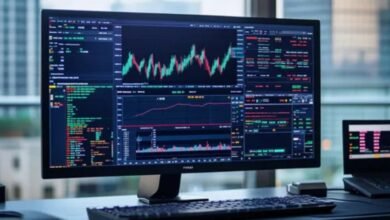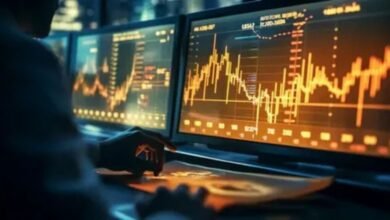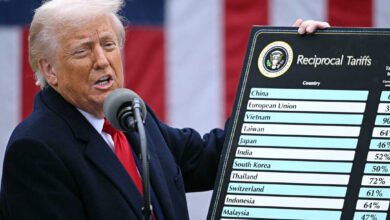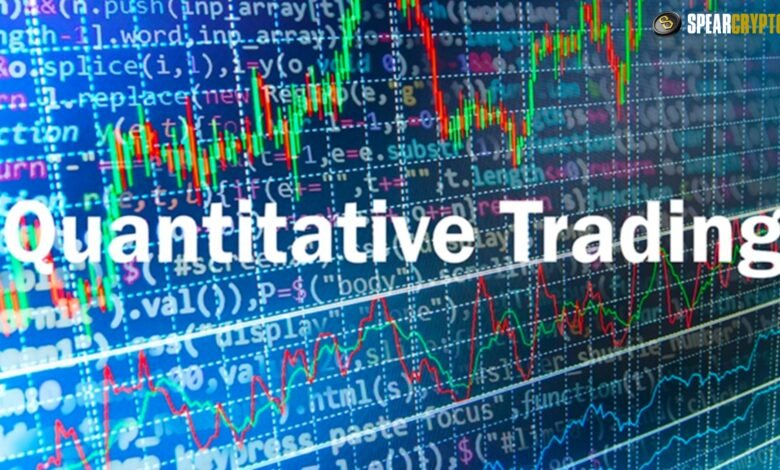
Crypto quantitative trading, often called “quant trading,” has emerged as a significant force within the cryptocurrency market. It combines mathematical models, statistical analysis, and algorithmic strategies to execute trades in the highly volatile crypto markets. As the cryptocurrency market continues to evolve, with its unique challenges and opportunities, Crypto quantitative trading offers a systematic approach to capturing profits while managing risk. This article delves into the latest developments in crypto quantitative trading, exploring the key strategies, tools, and trends shaping this dynamic field.
The Rise of Quantitative Trading in Crypto
Quantitative trading in traditional financial markets has a long history, with hedge funds and proprietary trading firms employing complex models to generate alpha. With its 24/7 trading environment, high volatility, and lack of central authority, the cryptocurrency market presents challenges and opportunities for quant traders. As the market has matured, the tools and strategies from traditional finance have been adapted and refined to fit the unique characteristics of crypto assets.
The rise of decentralized finance (DeFi), the proliferation of digital assets, and the increased institutional participation in the crypto space have further fueled the growth of quant trading. Today, a significant portion of crypto trading volume is driven by algorithms, making Crypto quantitative trading an essential part of the ecosystem.
Critical Strategies in Crypto Quantitative Trading
Market Making
Market making is one of the most common strategies in Crypto quantitative trading. It involves simultaneously placing buy and sell orders to profit from the bid-ask spread. Market makers provide liquidity to the market and, in return, earn a small profit from the spread of each transaction.
Market-making strategies can be highly effective in the crypto market due to the fragmentation of liquidity across multiple exchanges and trading pairs. Automated market-making (AMM) protocols, particularly in the DeFi space, have also become popular, allowing traders to provide liquidity in decentralized exchanges (DEXs) and earn fees.
Arbitrage
Arbitrage is a strategy that exploits price differences of the same asset across different markets. In the crypto space, arbitrage opportunities arise due to the decentralized and global nature of the market. For example, a trader might buy Bitcoin on one exchange where the price is lower and sell it on another where the price is higher, locking in a risk-free profit.
Arbitrage can be classified into several types, including spatial arbitrage (across different exchanges), triangular arbitrage (involving three different assets), and statistical arbitrage (using statistical models to predict price convergence). As the market has become more efficient, simple arbitrage opportunities have diminished, leading traders to develop more sophisticated models to identify and exploit these inefficiencies.
Trend Following
Trend following is a strategy that aims to capitalize on the momentum of an asset’s price movement. Quant traders use technical indicators, such as moving averages, to identify trends and make trades that align with the prevailing market direction. Trend-following strategies can be particularly lucrative in the crypto market, where prices can experience significant and rapid changes.
One of the challenges with trend-following in crypto is the market’s high level of noise and volatility, which can lead to false signals. To mitigate this, quant traders often use filters, such as volatility-adjusted moving averages, to improve the accuracy of their signals.
Mean Reversion
Mean reversion is based on the idea that prices will eventually revert to their historical mean or average. In the crypto context, mean reversion strategies involve identifying temporarily overbought or oversold assets and betting on their price returning to the mean.
Quant traders use statistical techniques like Bollinger Bands or Z-scores to identify mean-reversion opportunities. This strategy can be effective in the crypto market, particularly in periods of low volatility or when specific assets exhibit cyclical behavior.
High-Frequency Trading (HFT)
High-frequency trading involves executing many trades in fractions of a second to capture small price movements. HFT requires sophisticated infrastructure, including low-latency connections to exchanges, high-speed data feeds, and robust algorithms.
In the crypto market, HFT is challenging due to its fragmentation, high volatility, and varying exchange performance. However, technological advancements and the increasing market maturity have made HFT more feasible. HFT firms in crypto often engage in market-making, arbitrage, and other strategies that benefit from rapid execution and minimal holding periods.
Tools and Technologies in Crypto Quantitative Trading
The success of quantitative trading in crypto relies heavily on technology. Here are some of the essential tools and technologies used by quant traders:
Trading Bots
Trading bots are automated software programs that execute trades based on predefined criteria. In crypto, trading bots can operate 24/7, making them ideal for a never-ending market. Bots can be programmed to implement various strategies, including market-making, arbitrage, and trend following.
Popular trading bot platforms in the crypto space include 3Commas, HaasOnline, and Cryptohopper. These platforms offer customizable strategies, backtesting capabilities, and integration with multiple exchanges.
Data Analytics and Machine Learning
Data is the lifeblood of quantitative trading. In crypto, quant traders rely on various data sources, including price data, trading volumes, order books, social media sentiment, and blockchain metrics. Analyzing this data requires advanced tools and techniques, including machine learning.
Machine learning algorithms can help identify patterns in the data that are not immediately apparent through traditional analysis. For example, machine learning models can predict price movements based on historical data or detect arbitrage opportunities across multiple exchanges.
Backtesting and Simulation
Before deploying a trading strategy in the real market, quant traders often use backtesting and simulation to evaluate its performance. Backtesting involves running a strategy on historical data to see how it would have performed in the past. Conversely, simulation allows traders to test their approach in a virtual environment miming actual market conditions.
Backtesting tools like QuantConnect and TradingView are popular among crypto quant traders. These platforms provide access to historical data and offer a range of metrics to evaluate strategy performance.
Blockchain Analysis Tools
Blockchain analysis tools are essential for quant traders who need to understand on-chain activity. These tools provide insights into blockchain transactions, wallet activity, and network health. For example, a quant trader might use blockchain analysis to monitor large movements of Bitcoin to or from exchanges, which could indicate potential market-moving events.
Popular blockchain analysis tools include Glassnode, Chainalysis, and Sentiment. These platforms offer a range of metrics and visualizations to help traders make informed decisions.
Execution Algorithms
Execution algorithms optimize the process of placing orders in the market. In a highly fragmented market like crypto, where liquidity is spread across multiple exchanges, execution algorithms can help traders minimize slippage and reduce trading costs.
For example, a volume-weighted average price (VWAP) algorithm might execute a large order over time, minimizing its impact on the market. Other execution algorithms, like time-weighted average price (TWAP) or iceberg orders, can help traders achieve better pricing and reduce market impact.
Challenges and Risks in Crypto Quantitative Trading
While crypto quantitative trading offers significant opportunities, it also comes with its own set of challenges and risks:
Market Volatility
The cryptocurrency market is known for its extreme volatility, which can lead to significant losses if a strategy is not robust. Quant traders must account for this volatility in their models and use risk management techniques like stop-loss orders or hedging to protect their positions.
Liquidity Fragmentation
Liquidity in the crypto market is often fragmented across multiple exchanges and trading pairs. This can make it challenging to execute large trades without causing significant price movements. Quant traders must use sophisticated execution algorithms and monitor liquidity across different venues to ensure they can enter and exit positions efficiently.
Regulatory Uncertainty
The regulatory environment for cryptocurrencies is still evolving, and changes in regulations can significantly impact the market. For example, introducing new rules could lead to changes in market structure, affect liquidity, or even make specific strategies unviable. Quant traders need to stay informed about regulatory developments and be prepared to adjust their strategy accordingly.
Technology Risk
Quantitative trading relies heavily on technology, and any failure in the infrastructure can lead to significant losses. For example, a bug in a trading bot, a failure in the data feed, or a delay in order execution can all result in missed opportunities or unintended trades. To mitigate technology risk, quant traders must ensure their systems are robust, regularly tested, and have fail-safes.
Security Risks
The crypto market is particularly susceptible to security risks, including hacking, phishing, and other forms of cybercrime. Quant traders must take precautions to secure their trading infrastructure, including using hardware wallets for storing private keys, employing multi-factor authentication, and regularly updating software to protect against vulnerabilities.
The Future of Crypto Quantitative Trading
As the cryptocurrency market continues to evolve, so will the quantitative trading field. Several trends are likely to shape the future of Crypto quantitative trading: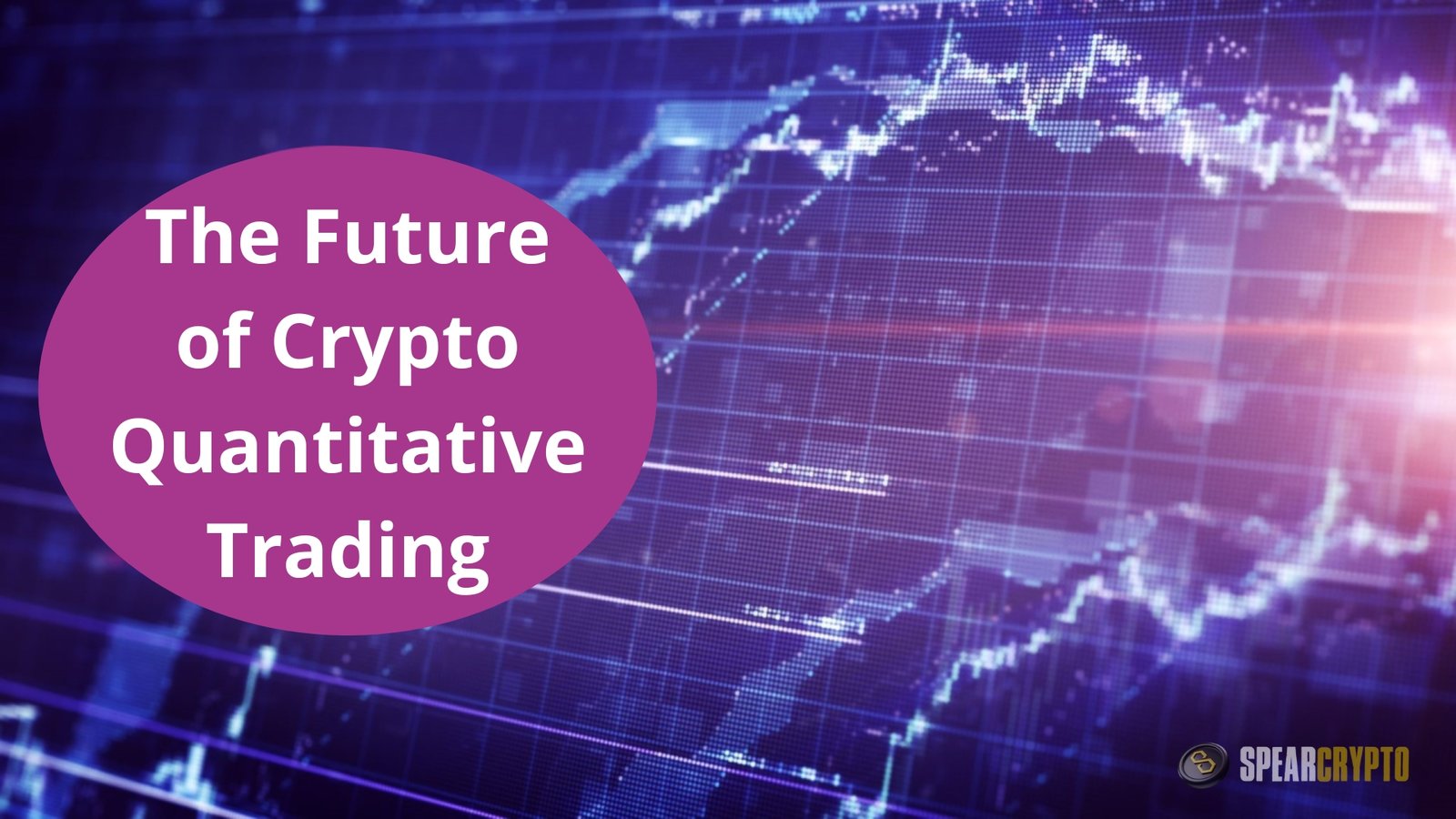
Integration of Artificial Intelligence (AI)
Integrating AI into quant trading strategies is expected to become more prevalent. AI can enhance the ability to process large amounts of data, identify complex patterns, and adapt to real-time market conditions. This could lead to developing more sophisticated and adaptive trading strategies that outperform traditional models.
Expansion of DeFi and DEX Strategies
DeFi and decentralized exchanges (DEXs) growth presents new opportunities for quant traders. As these platforms mature, strategies involving yield farming, liquidity provision, and decentralized lending are likely to become more sophisticated. Additionally, integrating cross-chain trading and interoperability between blockchains will open up new avenues for arbitrage and other strategies.
Increased Institutional Participation
The increasing participation of institutional investors in the crypto market will likely bring more capital, liquidity, and competition to the space. This will drive the development of more advanced trading tools, execution algorithms, and risk management techniques. Institutional participation will also likely lead to greater regulatory scrutiny, which could shape the market’s future and the strategies that quant traders employ.
Development of Quantum Computing
Quantum computing has the potential to revolutionize quantitative trading by enabling the processing of vast amounts of data and solving complex problems that are currently beyond the reach of classical computers. While still in its early stages, the development of quantum computing could create entirely new trading strategies and models that could give quant traders a significant edge in the market.
Conclusion
Crypto quantitative trading represents a dynamic and rapidly evolving field that offers significant opportunities for those who can master its complexities. By leveraging advanced strategies, cutting-edge technology, and a deep understanding of the market, quant traders can navigate the challenges of the crypto space and capture profits in a way that is systematic and disciplined.
As the cryptocurrency market matures, quantitative trading will likely grow even more prominent, driving innovation and shaping the future of digital finance. Whether you’re a seasoned quant trader or someone looking to explore this exciting field, staying informed about the latest trends and developments will be crucial to success in crypto quantitative trading.



